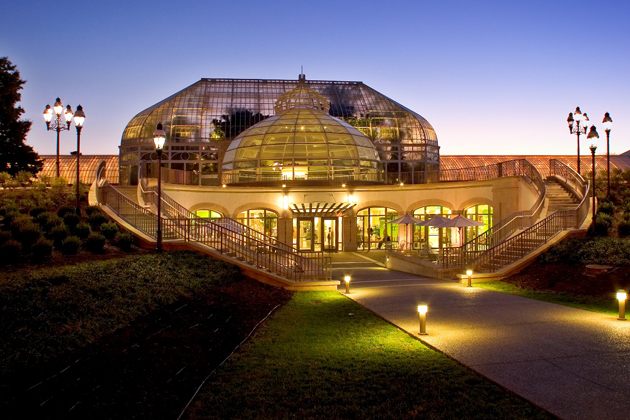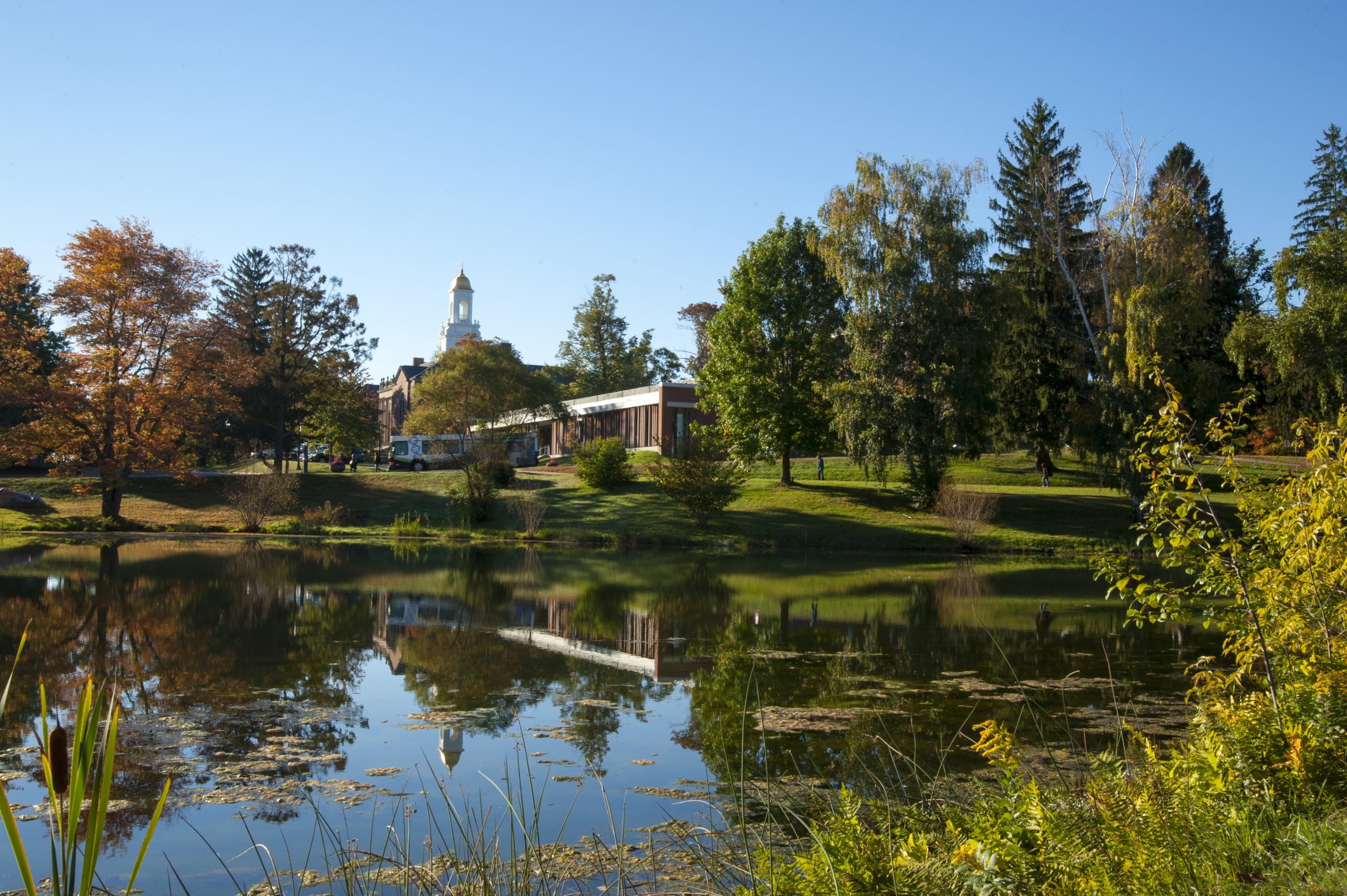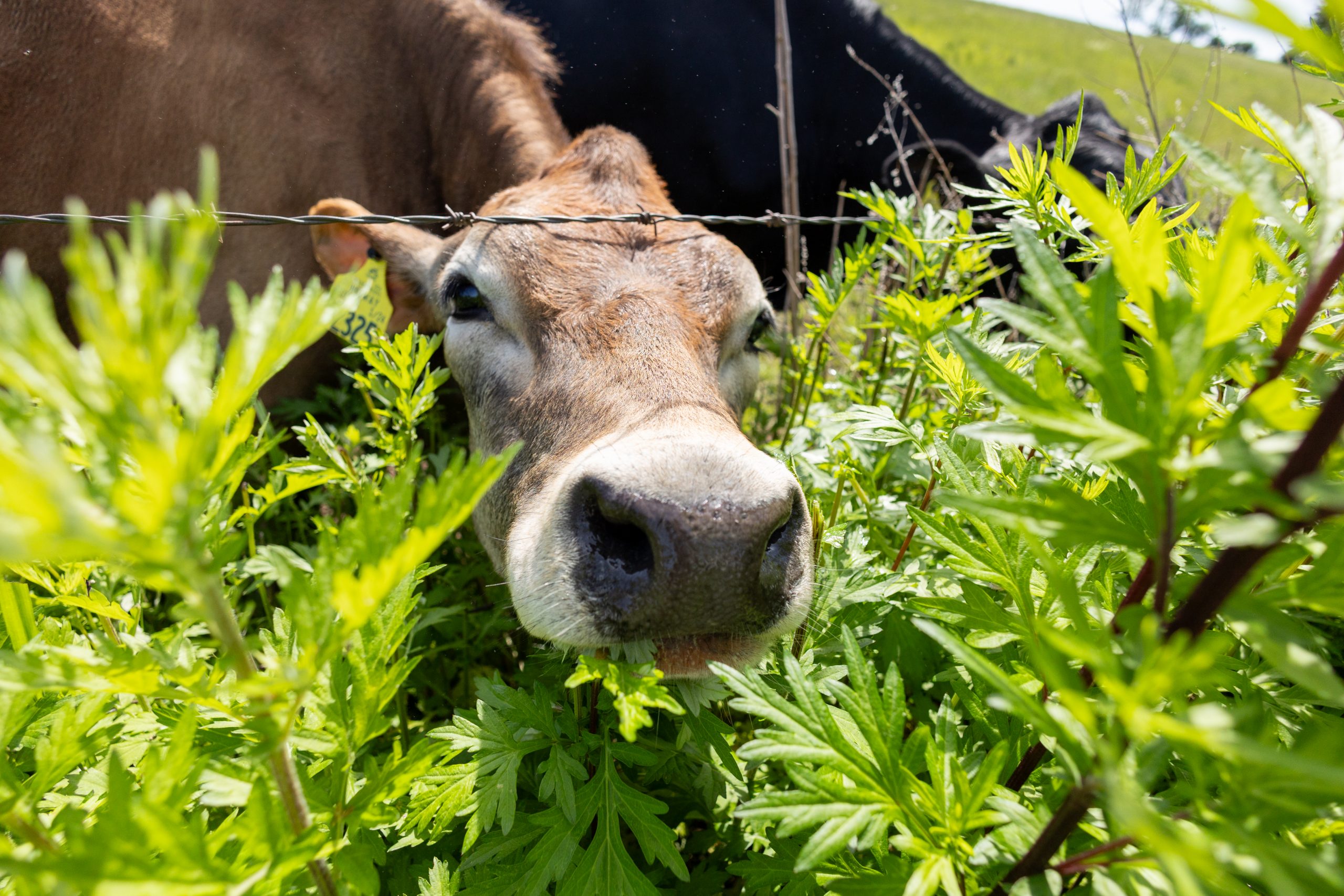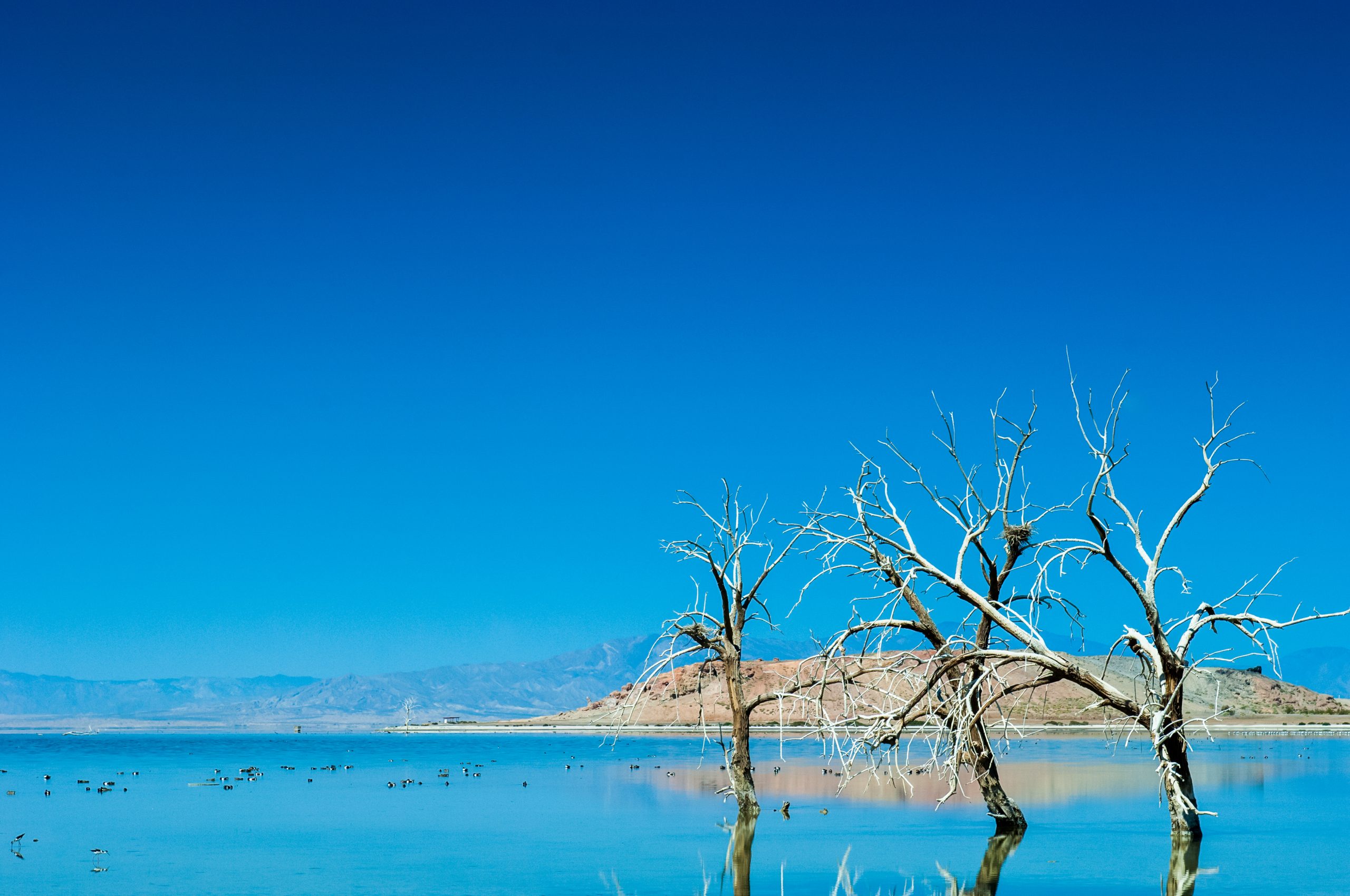This story was originally published in UConn Today in October, 2011.
Richard Piacentini ’84 MS was happily working as a pharmacist in Washington, D.C., when he stumbled on something that turned his life around.

He was really interested in the bonsai collection at the National Arboretum, which he visited regularly. “After a while,” he says, “I looked around and thought, ‘I’d like to run a place like this someday.’”
So the New York native hatched a plan that would eventually lead him to run one of the “greenest” gardens in the country.
From pharmacy to conservatory
Piacentini’s first stop was Virginia Commonwealth University, where he earned an MBA so he’d have the experience to run a company. His next stop: UConn, to learn from one of the great botanists of the world, Greg Anderson, Board of Trustees Distinguished Professor of Ecology and Evolutionary Biology.
“Richard’s story is inspiring,” says Anderson, now a professor emeritus. “He was making a living, but it wasn’t what he really wanted to do. He found his passion, and it’s so impressive that he had the commitment to become a student again.”
Piacentini arrived at UConn in 1982 with an interest in medicinal plants and traditional medicine, combining his love of botany with his background in pharmacy. UConn’s strength in botany in the College of Liberal Arts and Sciences and in horticulture in the College of Agriculture and Natural Resources were a perfect fit for him.
Now, Piacentini is the executive director of Phipps Conservatory and Botanical Gardens in Pittsburgh, Pa., where he’s served for 17 years.
Phipps is known as one of the “greenest” greenhouses in the United States. And with Piacentini at the helm, it’s about to get a lot greener.
The world’s greenest building

Phipps already achieves its environmental mission with sustainable demonstration gardens, a LEED-certified visitor center, a food garden, and a multi-tier tropical forest conservatory, the most energy-efficient in the world. But now, Piacentini is upping the ante by constructing an education, research, and administration building that will exceed even LEED Platinum certification, the highest mark given to green buildings.
Called the Center for Sustainable Landscapes, the building is an acceptance of the “Living Building Challenge,” a charge to the public by the Cascadia Chapter of the U.S. Green Building Council to build a zero net energy and water building. These buildings have been said to function as elegantly and efficiently as a flower.
So far, says Piacentini, there are fewer than 10 such buildings being constructed throughout the world. Few institutions have accepted the challenge, he says, partly because of the effort it takes to find contractors willing to work around materials and chemicals on a “red list” of banned products.
“They don’t call it a challenge for nothing,” he says. “Try building a building without PVC. Good luck!”
But, he adds, the LEED program has paved the way for these living buildings.
“It’s the same problem that the LEED certification had when it got started,” he continues. “People didn’t want to waste their time doing it. Now, it’s a building standard.”
See “The Evolving Green Story of Phipps,” a video prepared by the Conservatory.
The Center for Sustainable Landscapes will also incorporate the Sustainable Sites initiative guidelines for sustainable landscaping surrounding the building.
By becoming the first building to achieve LEED Platinum certification, Living Building status, and a Sustainable Sites seal of approval upon its completion, the Center for Sustainable Landscapes could be considered the world’s greenest building.
Getting a move on
Not content to stop at conservation, the institution has also taken on healthy living initiatives under Piacentini’s leadership.
Based on a tour Piacentini took of First Lady Michelle Obama’s sustainable vegetable garden at the White House, Phipps is now a leader in Mrs. Obama’s Let’s Move Museums and Gardens program, and will host two regional conferences on stemming childhood obesity this year.
The conservatory boasts a children’s garden to grow food and has done away with soda in its café, a feat that Piacentini says has had its share of naysayers.
“People said there was no way we could do away with bottled water,” he says, “to reduce waste. Well, we did it. And now we’re getting rid of soda.”
Their replacement, fresh squeezed juices combined with seltzer, are actually more popular and cost less than cola drinks in their café, says Piacentini. And he adds that the move encourages not only healthy eating, but progressive thinking.
A great transformation
In many ways, Phipps is like the city of Pittsburgh: undergoing a transformation from older, industrial ideals to progressive and sustainable practices, explains Piacentini.
“People used to think that man should conquer nature. But now we instead think: How do we live and integrate with all the species on the planet? Pittsburgh and Phipps are both reinventing themselves for the next century.”
So it’s fitting, then, that Phipps is led by a man who made a great transformation in his own life.
“This is my dream,” he says. “So many people are stuck in the old way of doing things. You have to ask questions and never accept no for an answer, because there are always new and better ways to do things.”
But there’s still some of the Piacentini of the past at Phipps. It lives in one of the most popular exhibits at the conservatory, which Piacentini personally developed: its bonsai collection.



